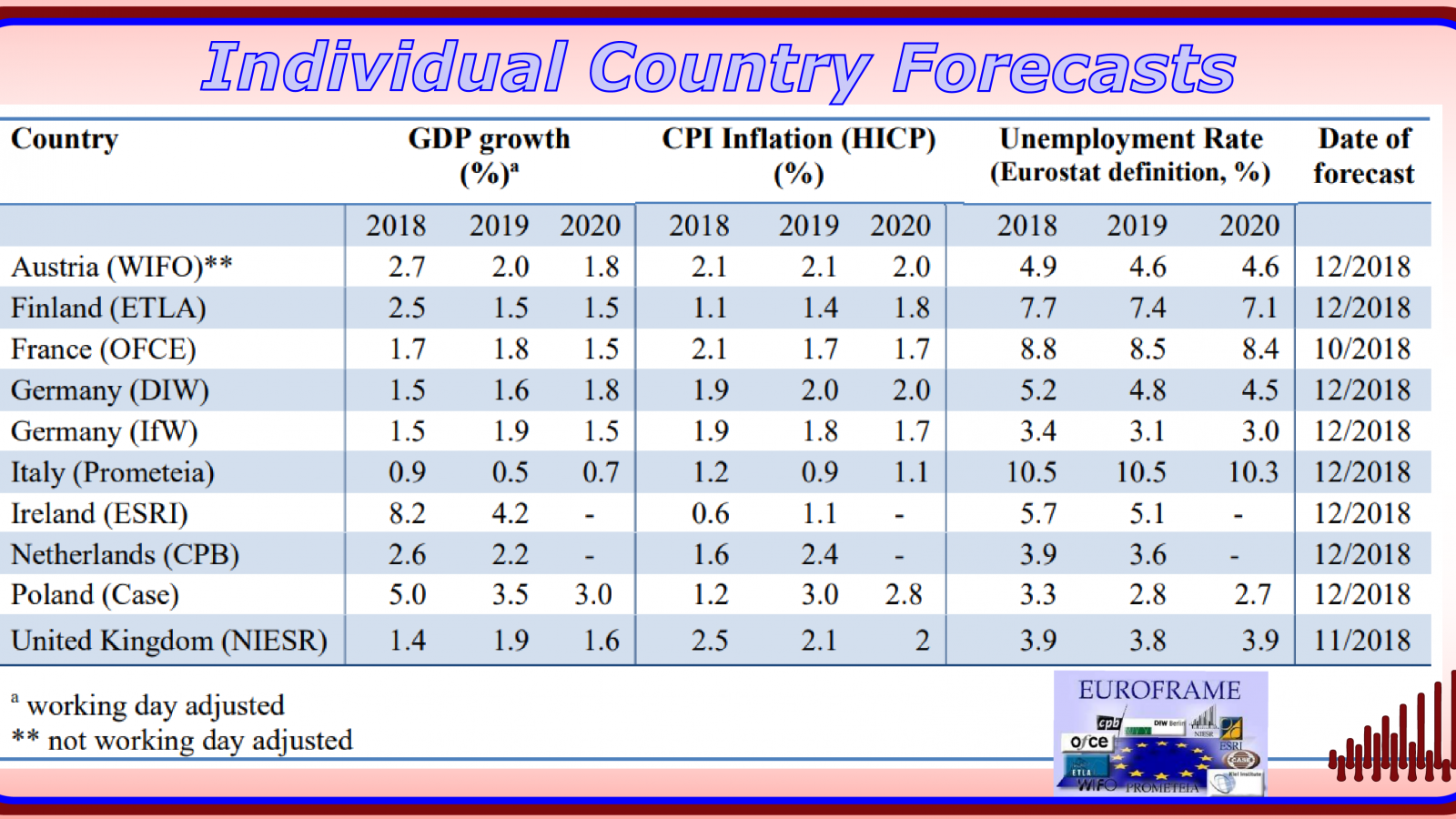Euroframe Economic Assessment of the Euro Area Winter 2018/2019
 Pub. Date
Pub. Date
 Pub. Type
Pub. Type

This Euroframe Report presents an assessment of the economic outlook for 2019 and 2020 focused on the euro area based on a synopsis of the forecasts of Euroframe institutes, including NIESR. Perspectives for UK and CEEs countries are described in Boxes A and B respectively. In the Focus section, we discuss a special topic, based on work done in the participating institutes. This time, against the backdrop of the progressing recovery, we discuss the evolution of wage growth in Europe, highlighting countries peculiarities.
The global economy has lost momentum in 2018 amid a tightening of monetary policy in the US and intensifying global trade disputes. The EUROFRAME institutes project a further slowdown of the world economy in 2019 with both the United States and China decelerating and risks tilted to the downside as uncertainties remain high.
Against this backdrop, the euro area economy is expected to moderately slowdown further with growth rates of 1.6 percent in 2019 and 1.5 percent in 2020. Labour market conditions will nevertheless improve further as unemployment continues to decline, although at a slower pace than in the last years. The downside risks for the euro area economy seem to have increased in recent months amid the threat of a further escalations of the international trade conflicts and the uncertainties around Brexit (the report contains a box on the risk of a no deal Brexit).
Nominal wages in the euro area have finally picked ab on a broad basis after a number of years of pronounced weakness. Growth in gross wages and salaries increased from little more than 1.5 per cent in 2012-2017 to around 2.5 per cent in 2018 and should remain close to that level in 2019. In real terms wage growth at the euro area level is expected to be close to long run averages although below the rates seen in 2015/16, when CPI inflation was depressed by falling oil prices. Nominal wage growth is on a rising trend also in most European countries outside the euro area, reflecting robust employment growth and falling unemployment.


















